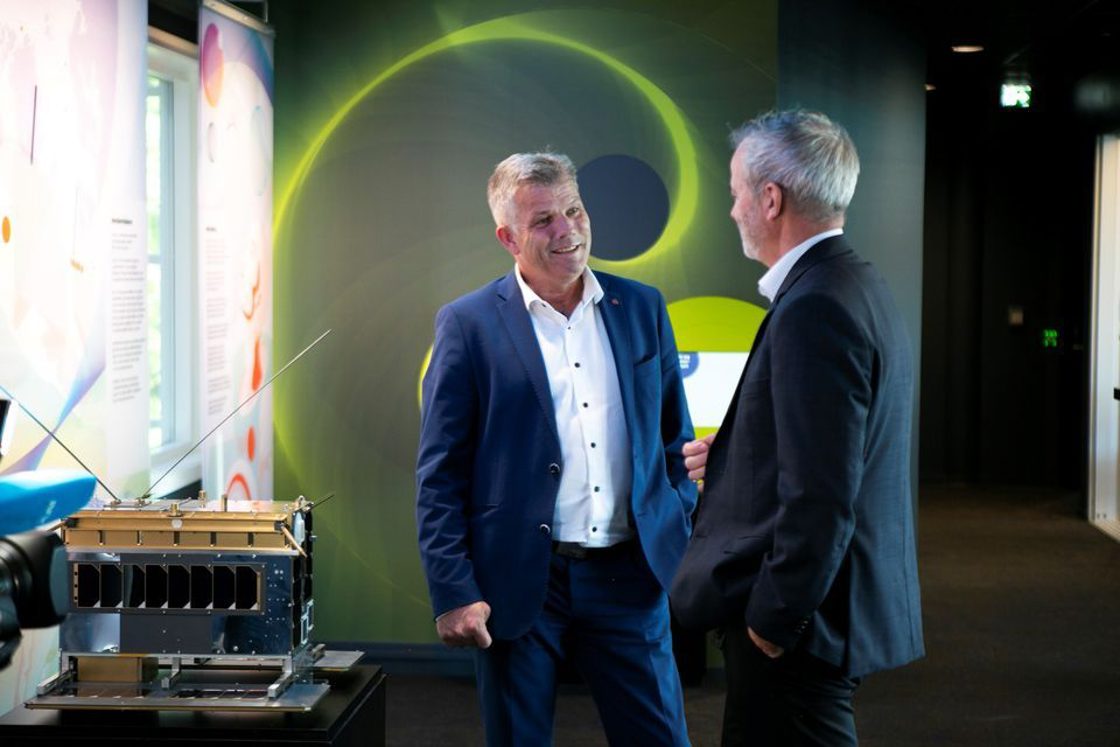Norwegian satellites to detect illegal fishing
Press release | Date: 22/09/2023 | Ministry of Trade, Industry and Fisheries
The Norwegian Government is launching a global ocean surveillance programme against fisheries crime. More than a third of the world’s coastal states will be given access to Norwegian satellite data and expertise, which they can use to carry out surveillance in their own waters and detect fisheries crime.

– This is transnational organised financial crime which depletes the seas of resources that are worth billions of NOK. Fisheries crime threatens the oceans’ sustainability and maritime ecosystems, depriving local communities of workplaces and resources. Combatting illegal fishing is very important for a large maritime nation such as Norway. To overcome the problem of fisheries crime, we are now sharing technologies and expertise with many other countries,’ says Minister of Fisheries and Ocean Policy, Bjørnar Skjæran.
Norway will share AIS data from Norwegian satellites with all countries that have joined the Blue Justice Community. The information will be given to the countries free of charge, enabling them to analyse the data themselves and detect fisheries crime. The Norwegian tracking centre in Vardø, which is staffed with analysts from the Norwegian Coastal Administration and Directorate of Fisheries, can also offer free assistance.
– Fighting fisheries crime is vital for the development of sustainable and fair ocean economies in developing countries. Tracking fishing vessels may become a critical tool for these countries,’ says Minister of International Development Anne Beathe Tvinnereim.
The new ocean surveillance programme has been developed by the Norwegian Coastal Administration’s BarentsWatch Centre and the Norwegian Space Agency.
– Essential for the UN
Norway has long been a driving force for a joint international initiative against fisheries crime and already funds a project to fight fisheries crime under the United Nations Development Programme (UNDP). The Blue Justice Community will be an important addition to this work.
– Norway, and not least the Nordic countries, is a region that has much to offer the global south. What is unique about this Norwegian initiative is that it combines the robust technical knowledge of the authorities with digitisation and data sharing. This is essential for the UN in our work to achieve the Sustainable Development Goals,’ says Ulrika Modeér, UN Assistant Secretary-General and Director of the Bureau of External Relations and Advocacy, UNDP.
Background
Facts on the Blue Justice Initiative
- Norway took the initiative for a Nordic ministers’ statement to fight fisheries crime in 2017, when Norway held the presidency of the Nordic Council of Ministers.
- In 2018, Norway took the initiative for an international declaration against fisheries crime, which was initially signed by nine ocean nations.
- The declaration is now backed by 61 countries, which corresponds to approx. 37% of the world’s ocean states. Most of these countries are developing countries, which will particularly benefit from the new programme.
- In 2019 Norway launched the ‘Blue Justice Initiative‘, which will offer countries assistance in their work to combat fisheries crime internationally.
- The initiative’s development-focused activities are primarily handled by the UNDP Nordic office, which has offices in Oslo.
- The Blue Justice Initiative’s tracking centre is co-located with the joint analytical unit of the Norwegian Directorate of Fisheries and the Coastal Administration, at Vardø Vessel Traffic Service Centre.
- The cooperation will be handled by an international vessel tracking centre, which was established in Vardø in 2021, and via a digital platform developed in Norway and managed by UNDP under the auspices of the UN. This digital platform will facilitate secure cooperation between the states to combat fisheries crime.
Facts on AIS
- AIS is short for Automatic Identification System.
- Vessels equipped with AIS transponders transmit dynamic information about their own identity, speed and course to vessels sailing in the vicinity via the VHF channel and receive corresponding information from vessels in the vicinity.
- The system was first established as an anti-collision tool for shipping
- The AIS information is supplementary to the radar-based information received by vessels.
- The world’s first microsatellite with AIS technology was developed in Norway and launched in India in 2010.
- Norway currently has several microsatellites orbiting the earth, and is developing new ones.
- Every year, the Norwegian satellites gather approx. 2.1 billion tracking signals (AIS) from around the world.